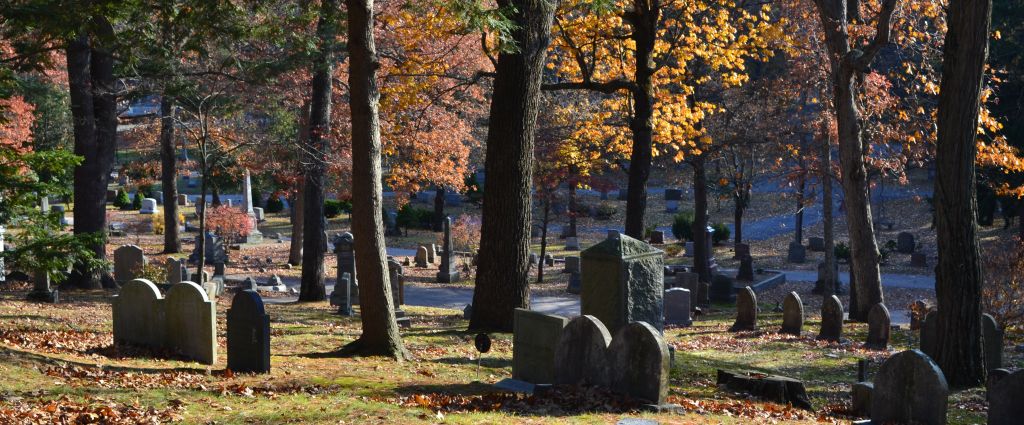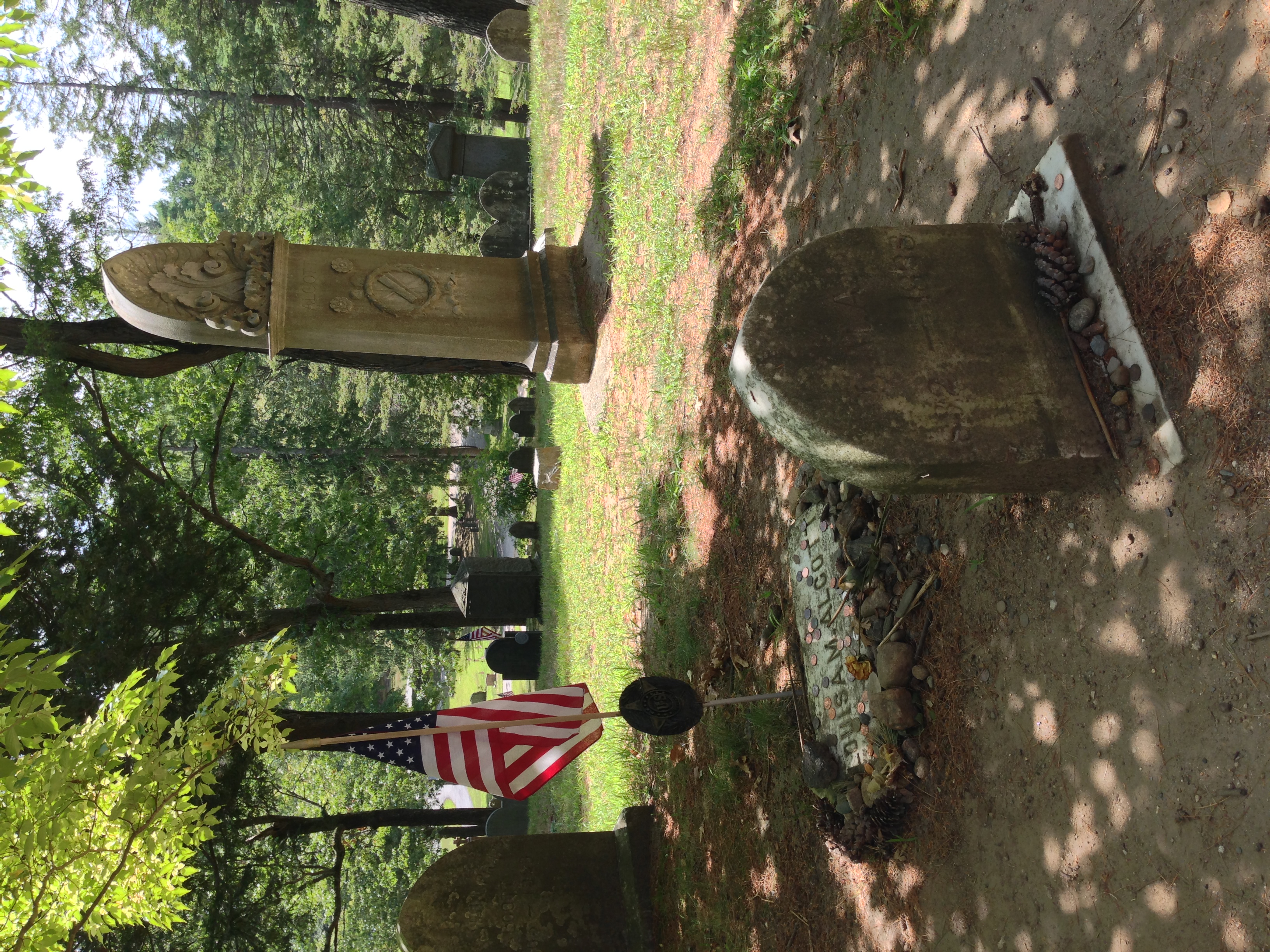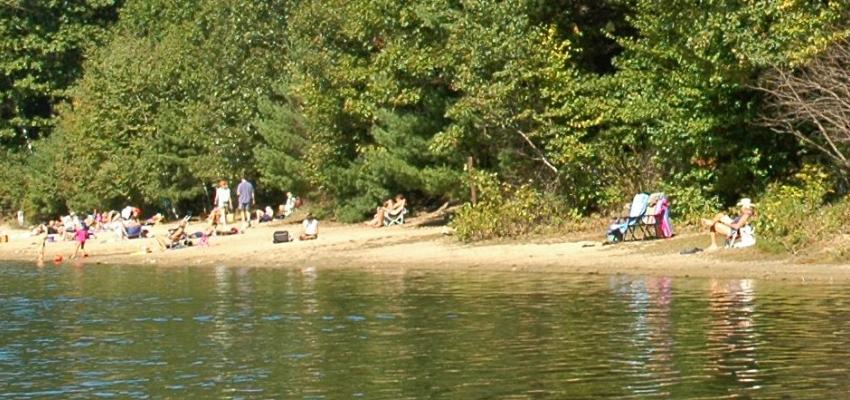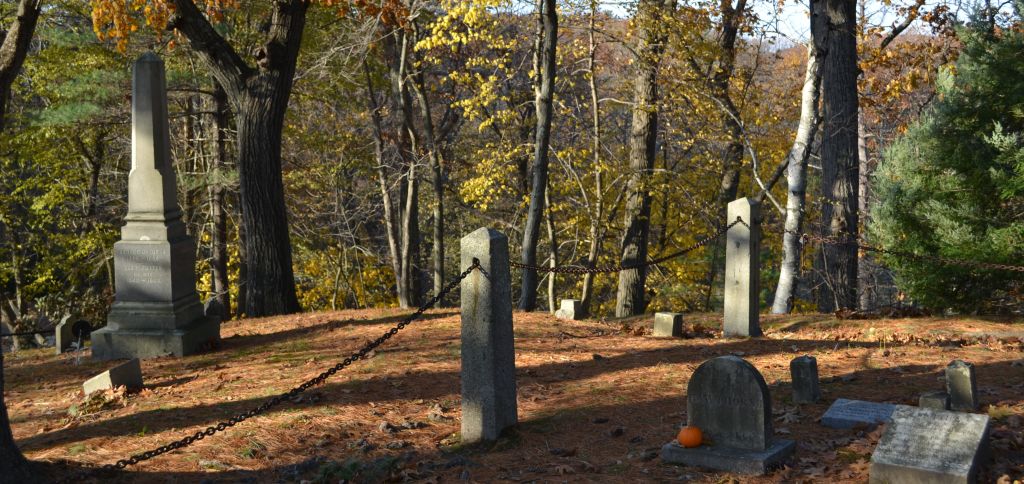Famous writers including Emerson, Thoreau, Hawthorne, and the Alcotts turned Sleepy Hollow Cemetery into our country’s first conservation project.
-
November/December 2022
Volume68Issue6
Editor’s Note: Greg Melville teaches English at the U.S. Naval Academy and is the author of several books, including Over My Dead Body: Unearthing the Hidden History of America's Cemeteries, from which this essay was adapted.

Growing up in Bedford, Massachusetts, I almost never went inside Sleepy Hollow Cemetery in nearby Concord because it seemed so impossibly old and haunted. Even the name seemed unsettling.
What I didn’t realize was that Sleepy Hollow is a national natural treasure. Before it became a graveyard, it was the outdoor playground for the literary titans Louisa May Alcott, Nathaniel Hawthorne, Ralph Waldo Emerson, and Henry David Thoreau, who all ended up buried there. Its environs directly influenced the transcendental movement in America.
Emerson, and to some extent, Thoreau, led the effort to create the cemetery to forever protect the property’s natural habitat from encroaching agriculture, deforestation, and development. In many ways, Sleepy Hollow served as the country’s first conservation land.
During the early and mid-nineteenth century, the seventeen-acre wooded tract on the edge of downtown Concord that has the original footprint of the cemetery was surrounded by open farmlands. The property occupied a glacially formed ridge and a quiet hollow below it that looked, in Emerson’s words, like it “lies in nature’s hand.”
Hawthorne described it as “a shallow space scooped out among the woods.”
It was a popular leafy refuge and outdoor playground for locals. Emerson began spending time in the woods there in the early 1830s, when he moved into his grandfather’s nearby old home on the Concord River, called the Old Manse. While writing his famed essay “Nature,” he sought inspiration by losing himself among the property’s thick groves of white oaks and pitch pines.

The final product essentially became the founding document of transcendentalism, a literary and philosophical movement that laid the groundwork for the American environmental movement.
Transcendentalism emerged as a response to the Industrial Revolution, preaching that the most fundamental truths are found through individuality and intuition, not society and reason. It proposed that nature connects the human soul to God, joining them as one.
A cemetery in the woods was the natural extension of this philosophy — here, a body would dissolve back into the soil, and the individual life was both marked and celebrated with a single stone.
After “Nature” was published in 1836, Concord became the epicenter of the transcendentalist movement, and — for that matter — of American literature. Thoreau read “Nature” while studying at Harvard and was so inspired by the work that he moved to Concord. He joined a slew of other intellectuals in Emerson’s orbit, like the famed feminist writer Margaret Fuller, who often stayed at Emerson’s home, and Bronson Alcott, the mutton-chopped freethinker whose views on communal living were a century ahead of their time.
Alcott’s daughter Louisa May published Little Women in 1868 based on her childhood experiences living in town. Many of the transcendentalists who descended on Concord also sought refuge in the sleepy hollow that would become the cemetery. So did author Nathaniel Hawthorne, who was not a transcendentalist, but as a writer, he was drawn to the town, regardless.
Hawthorne and his wife moved into the Old Manse — renting it from Emerson for $100 a year — upon their wedding in 1842. Thoreau planted them a vegetable garden in the backyard as a welcome gift. The couple often meandered into the sleepy hollow to pass the time.

Hawthorne described in his journal how, in its woods, the “sunshine glimmers through shadow, and shadow effaces sunshine, imaging that pleasant mood of mind where gayety and pensiveness intermingle.” The couple imagined building a home for themselves on the property’s ridgetop, overlooking the town.
Hawthorne wrote his famed collection of short stories Mosses from an Old Manse while living in Emerson’s house, and it’s believed that his wanderings at the sleepy hollow influenced details in many of his works, including a scene in the woods between Hester Prynne and her forbidden lover, Arthur Dimmesdale, in the classic The Scarlet Letter.
Then there’s Thoreau, who also frequented the sleepy hollow. He wrote Walden from 1845 to 1847 about his two years living alone in the Concord woods beside Walden Pond (on Emerson’s property). He famously wrote, “I went to the woods because I wished to live deliberately, to front only the essential facts of life, and see if I could not learn what it had to teach, and not, when I came to die, discover that I had not lived.”
In Walden, he builds upon Emerson’s views on nature by describing how it connects us to our humanity and arguing for its preservation in an America where nature was regarded as something to be vanquished. “Our village life would stagnate if it were not for the unexplored forests and meadows which surround it. We need the tonic of wildness.”
This philosophy intertwines with the essence of a cemetery’s ultimate role — to rejoin the human body with nature on the most elemental level. Rural-style burial grounds came closest to reaching the transcendentalists' end state, but, over time, we’ve been diverted from it. The heavily watered, over-fertilized, and carefully cut cemeteries we enjoy today return us to the vain projection of humans as all-powerful gods who can bend nature to our will, despite the overwhelming contrary evidence provided by the decaying bodies lying below the surface. Yet there are buds of hope in the environmentally minded, all-natural burial grounds emerging across the United States.
By the time Walden was published in 1854, Concord had been stripped of 90 percent of its woodlands, and the only “tonic of wildness” accessible to the downtown was in fact the sleepy hollow, which Thoreau understood the need to protect. He once wrote in his journal, “Each town should have a park, or rather a primitive forest, of 500 or a thousand acres, where a stick should never be cut for fuel, a common possession forever, for instruction and recreation.”

The best way to maintain a forest of this kind was a rural cemetery that would protect it for eternity. Encouraging human bodies to dissolve back into nature within it would be a feature, not a bug.
The construction of Sleepy Hollow Cemetery began in early 1855, and Emerson was elected by the townspeople as chairman of Concord’s five-person cemetery committee, created to oversee the project. Also on the committee was the local sheriff, who later served as a bodyguard for President Abraham Lincoln during the Gettysburg Address. Thoreau surveyed part of the property and designed a pond near the ridgetop.
The overall site was designed to take advantage of its natural features by landscape architect Horace Cleveland, who later laid out the urban park system of Minneapolis and the hundreds of miles of boulevards and parkways of Omaha, Nebraska. The project foreman was a local attorney who wrote in his autobiography that he “saved as many trees as possible from cutting.”
Emerson delivered the keynote address at Sleepy Hollow’s opening ceremony in September 1855, describing how he saw the cemetery, open to all Concord residents, as an ideal union between humans — both living and dead — and nature, or “earth to earth.” He praised the “irresistible democracy” of human bodies returning fully to the soil to sprout new life, and said he envisioned Sleepy Hollow’s beauty maturing over time, as the trees and shrubs took deeper root, and “these acorns, that are falling at our feet” someday became “oaks over-shadowing our children in a remote century.”
Being a small municipal cemetery, unlike privately operated ones like Mount Auburn and Green-Wood, Sleepy Hollow didn’t have to rely on selling grave plots to pay for its early operating expenses; the town had no need to boost foot traffic by reinterring a famous body. Regardless, townspeople enthusiastically supported the new burial ground. The spring after its opening, on the anniversary of the start of the Revolutionary War at Concord’s North Bridge, the cemetery committee organized a volunteer tree bee, as they named it, during which locals brought one hundred elms, pines, buttonwoods, and maples to plant on the property.

Intentionally protecting and cultivating nature in a patch of woods in this way was unprecedented for its time — and this milestone has been essentially overlooked in history. Although Walden is often credited for launching the conservation movement, the role of the Concord cemetery where its authors' remains now reside, has been forgotten, as so often happens to burial grounds. Instead, Yellowstone National Park, created by Congress in 1872 as the world’s first national park, is widely considered the country’s first protected natural space.
Within three decades of Sleepy Hollow's opening, Thoreau, Emerson, Louisa May Alcott, and Hawthorne all lay buried there within a stone’s throw of one another among a grove of mature pines on what’s now called Author’s Ridge. Hawthorne’s dream of settling at the top of Sleepy Hollow’s highest point eventually came true, in a way. His resting place is marked by a stone bearing simply his last name. His wife, Sophia, who died and was buried in England, was reinterred next to him in 2006.
Louisa May Alcott’s round headstone, located within the Alcott family plot, is engraved with the humble initials L.M.A. and the dates 1832–1888. A marker bearing her name lies flat in the ground at the foot of her grave.
Excerpt from the new book Over My Dead Body: Unearthing the Hidden History of America’s Cemeteries by Greg Melville, published by Abrams Press ©2022.

